Engineers working on the HS2 project have successfully slid the first section of a significant 320-metre-long viaduct into position, which will eventually carry high-speed trains across the M6 motorway near Birmingham Airport.
The initial stage of this complex operation, completed over the weekend, saw the “East Deck” of the M6 South viaduct slid 119 metres over a slip road adjacent to the motorway. To minimise disruption for motorists, the viaduct deck is being assembled off-site and will be pushed across the motorway in three distinct phases over three weekends. Each section is slid into place before subsequent parts are added behind it.
This multi-stage process means the weight of the deck will progressively increase with each push, starting from 1,300 tonnes this past weekend to a final weight of 3,290 tonnes for the last slide. These subsequent movements will extend the deck over the main M6 carriageway and, finally, the M6-M42 link roads. The weight includes pre-cast concrete deck slabs already in place on top of the steel structure, a method that further reduces the number of required motorway closures.
The East Deck will carry two tracks for trains heading towards London, while an adjacent “West Deck” will accommodate a further two tracks for services travelling to Birmingham and further north. The West Deck will be assembled and slid into place next year using the same innovative technique.
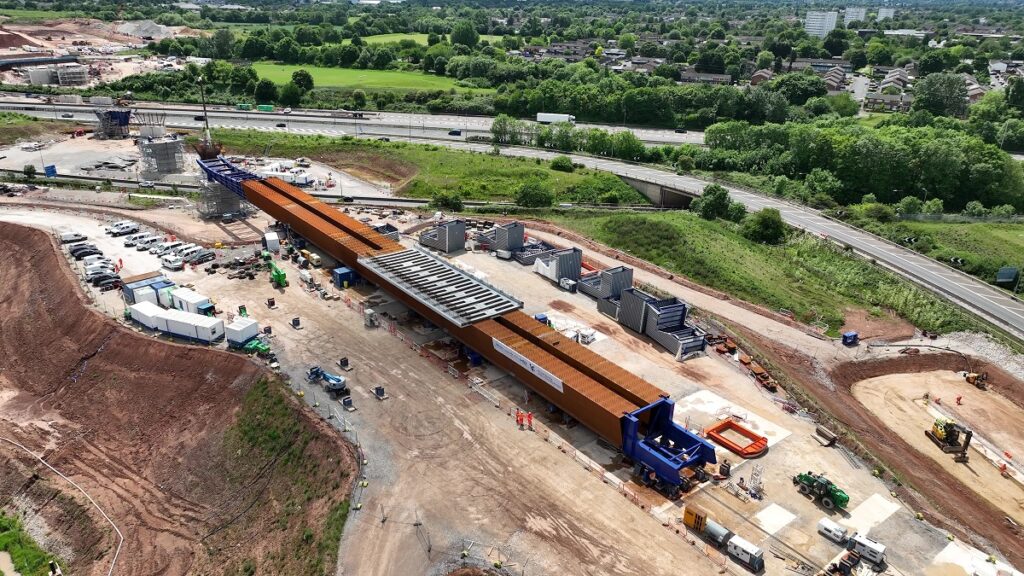

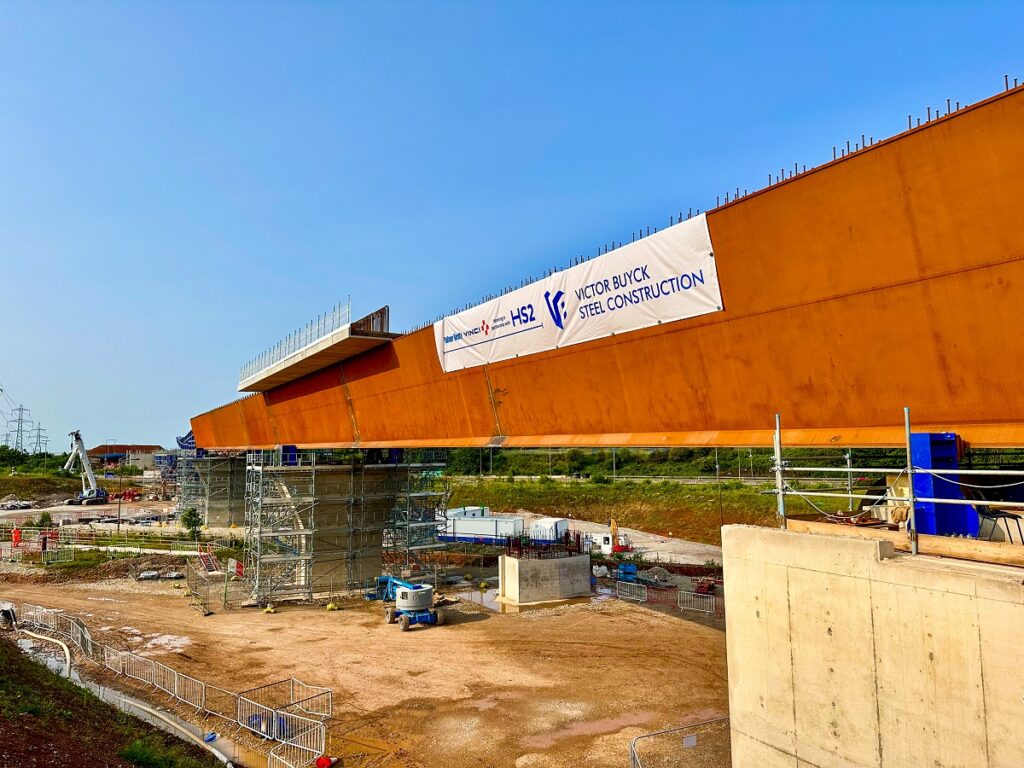
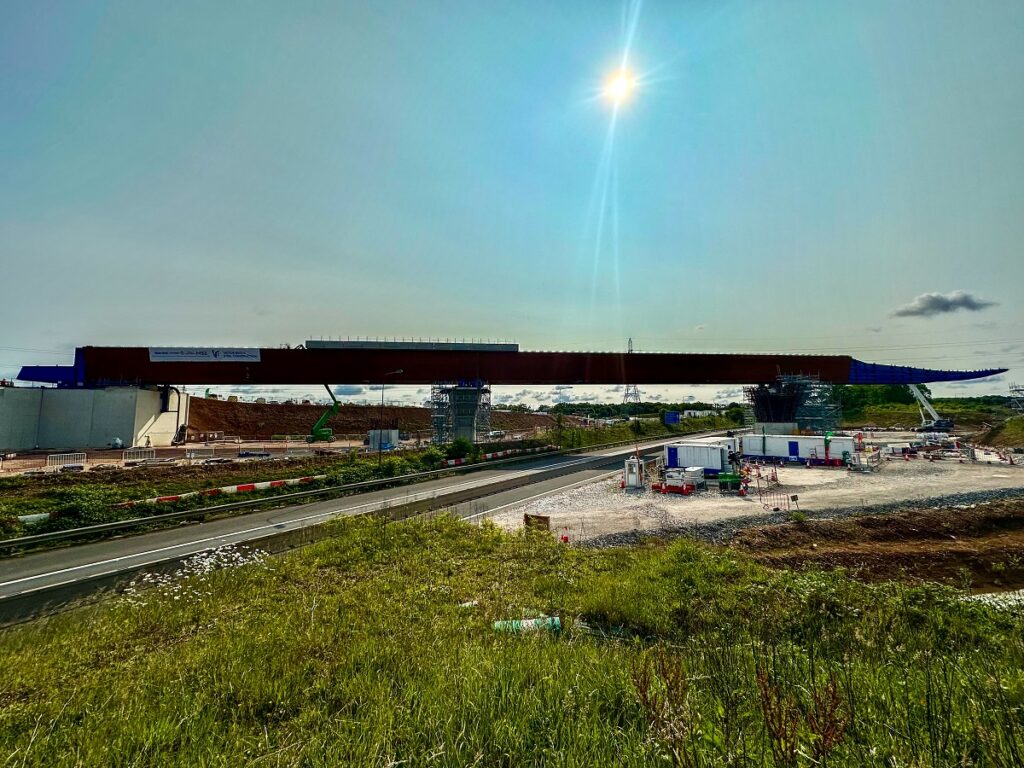
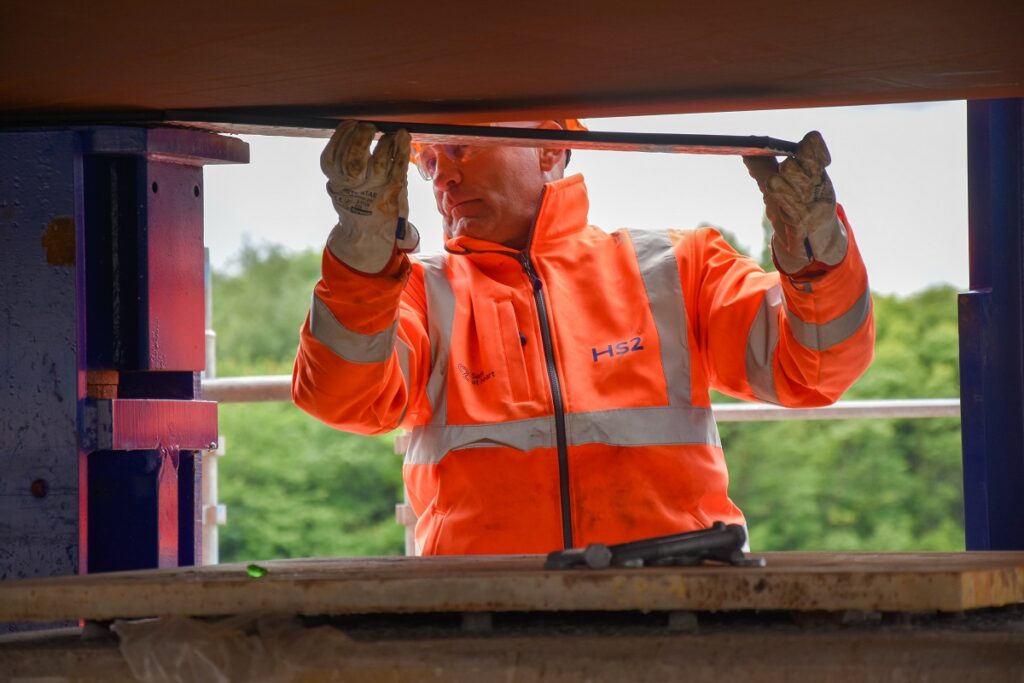
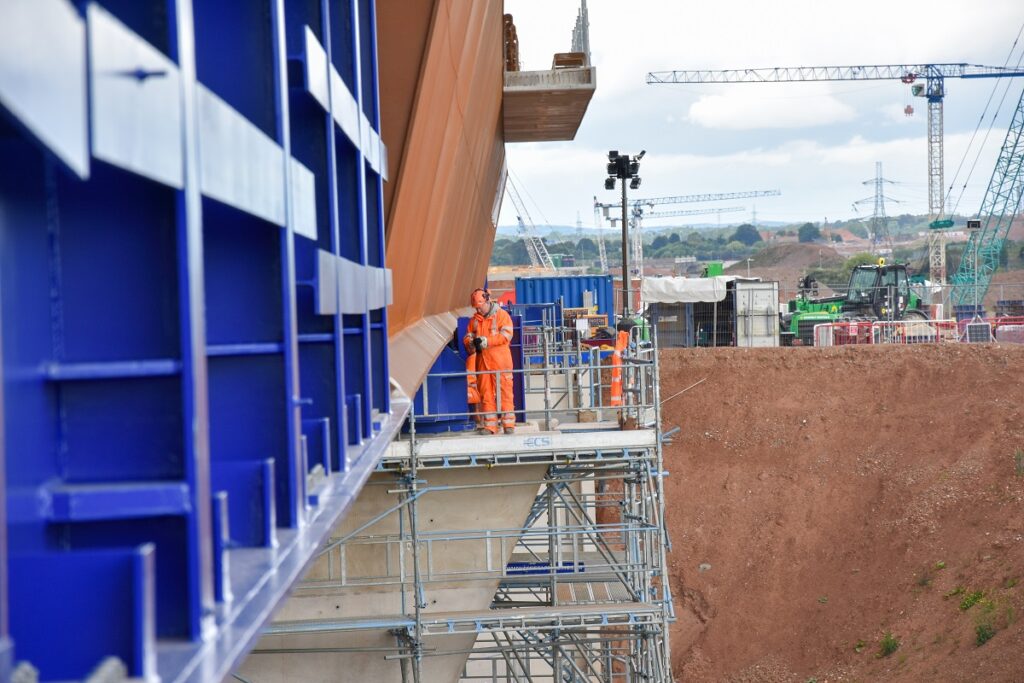
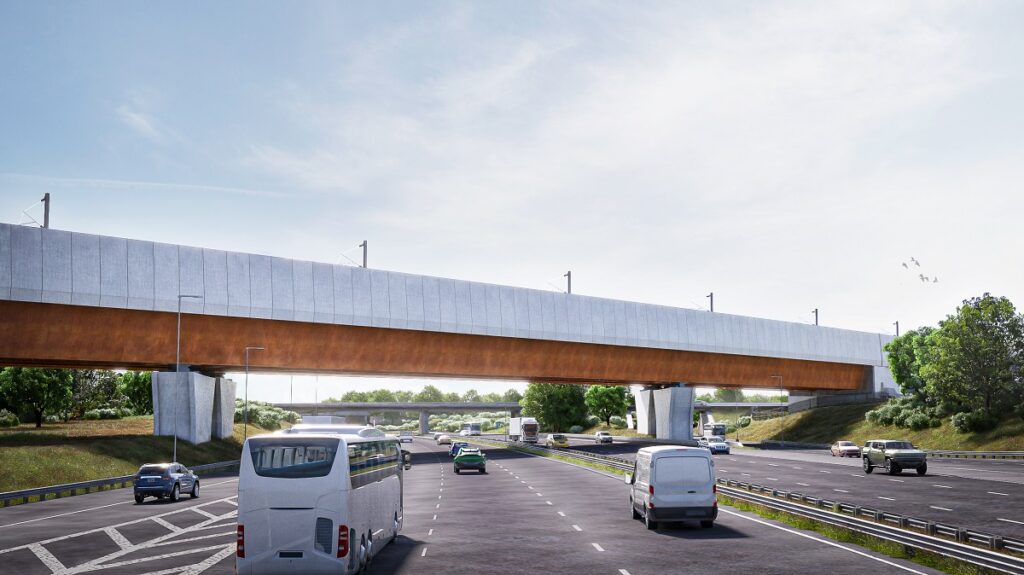
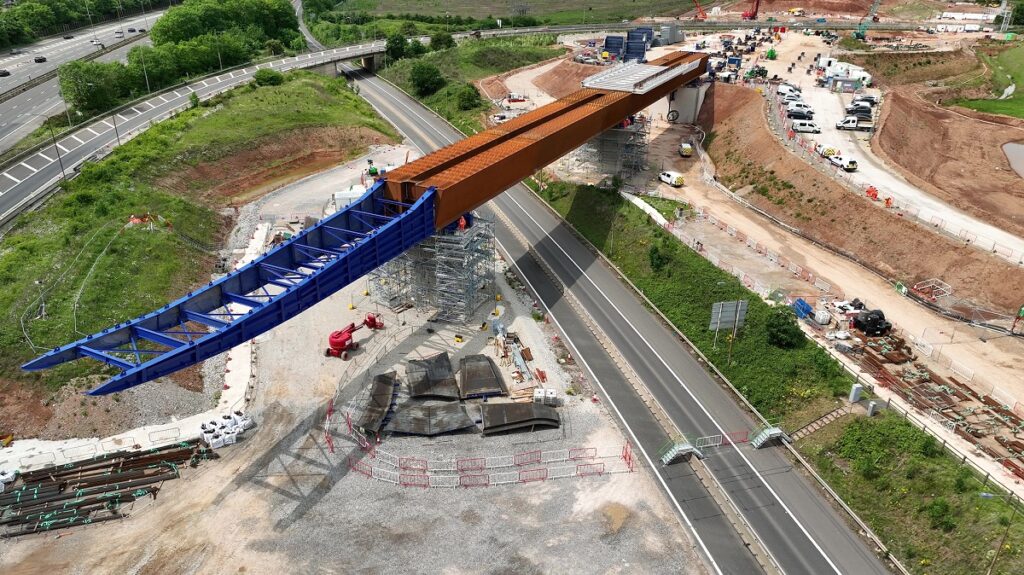
Liam Kenney, HS2 Ltd’s Senior Project Manager, said: “It’s great to see the first section of the East Deck in position over the weekend. Once complete, these twin viaducts will carry high speed trains over the M6 helping to improve journeys and free up space on the existing rail network for more freight and local services. I’d like to thank everyone who is worked so hard to deliver the first slide safely and efficiently opening the road to traffic 11 hours early.”
This intricate operation is being led by HS2’s main works contractor, BBV – a joint venture comprising Balfour Beatty and VINCI – with support from specialist steelwork company Victor Buyck Steel Construction (VBSC). The team is working in close collaboration with National Highways and other key local stakeholders, including the NEC and Birmingham Airport.
Victoria Lazenby, National Highways Regional Director for the Midlands, commented: “We know that any work on our roads affects drivers and local communities and always try to keep that disruption to a minimum. So we are delighted by the innovation shown by HS2 and BBV in this complex engineering feat to reduce the impact on road users. We will continue to work very closely with HS2 to ensure minimum disruption on our roads and are grateful to people for their patience while this major infrastructure scheme is delivered.”
The viaduct section was moved using a series of winches, known as strand jacks, at an average speed of twelve metres per hour. It slid across non-stick pads to reduce friction, a material typically found on the surface of household frying pans. A 36-metre-long temporary launch nose was installed at the front of the structure to guide the viaduct on its launching path and reduce the weight of the cantilevered section.
The viaduct, along with the launch nose, will remain in its current position while the next section is assembled. The structure is temporarily restrained by equipment located on the piers and abutments.
Russell Luckhurst, Balfour Beatty VINCI’s engineer leading the delivery of the works, said: “This complex viaduct spanning the M6 motorway and adjoining slip roads is really beginning to take shape, now we’ve successfully moved the first section into place. It’s a huge achievement for the dedicated project team who’ve worked tirelessly over the past three years to reach this point. We’re now focussed on delivering the next phase, which includes two further launches later in the year.”
Each viaduct span is formed of a hollow double-box structure constructed from weathering steel. This type of steel develops a natural protective layer of oxidisation, giving it a characteristic ‘rusty’ appearance and significantly reducing maintenance needs by eliminating the requirement for regular repainting.
The viaducts are supported by four pairs of concrete piers, with the tallest reaching 9.9 metres in height. A 4.5-metre-high parapet will be installed on the side facing Chelmsley Wood to minimise noise and disturbance from passing trains. The structural design was carried out by Balfour Beatty VINCI’s Design Joint Venture, a partnership between Mott MacDonald and SYSTRA.
Tom Dutton, Senior Design Co-ordinator for the Mott MacDonald SYSTRA DJV, commented: “The launch of the first deck of the two-deck M6 Motorway South Viaduct marks an exciting milestone following years of dedicated design work. We have seen the design take shape as the foundations, piers, and abutments were constructed, and now the moment has arrived for the deck to be launched. The launch design is a fantastic example of collaboration between Mott MacDonald SYSTRA DJV colleagues in the UK and France, BBV, and their steelwork and launching contractor, Victor Buyck Steel Construction. Together, we have addressed the complex challenges of the temporary works and the fabrication of the steel diaphragm—not to mention the feat of launching the viaduct decks over the M6 motorway itself. This achievement is a testament to our collective effort and a fantastic milestone for the immediate team and the whole project.”




